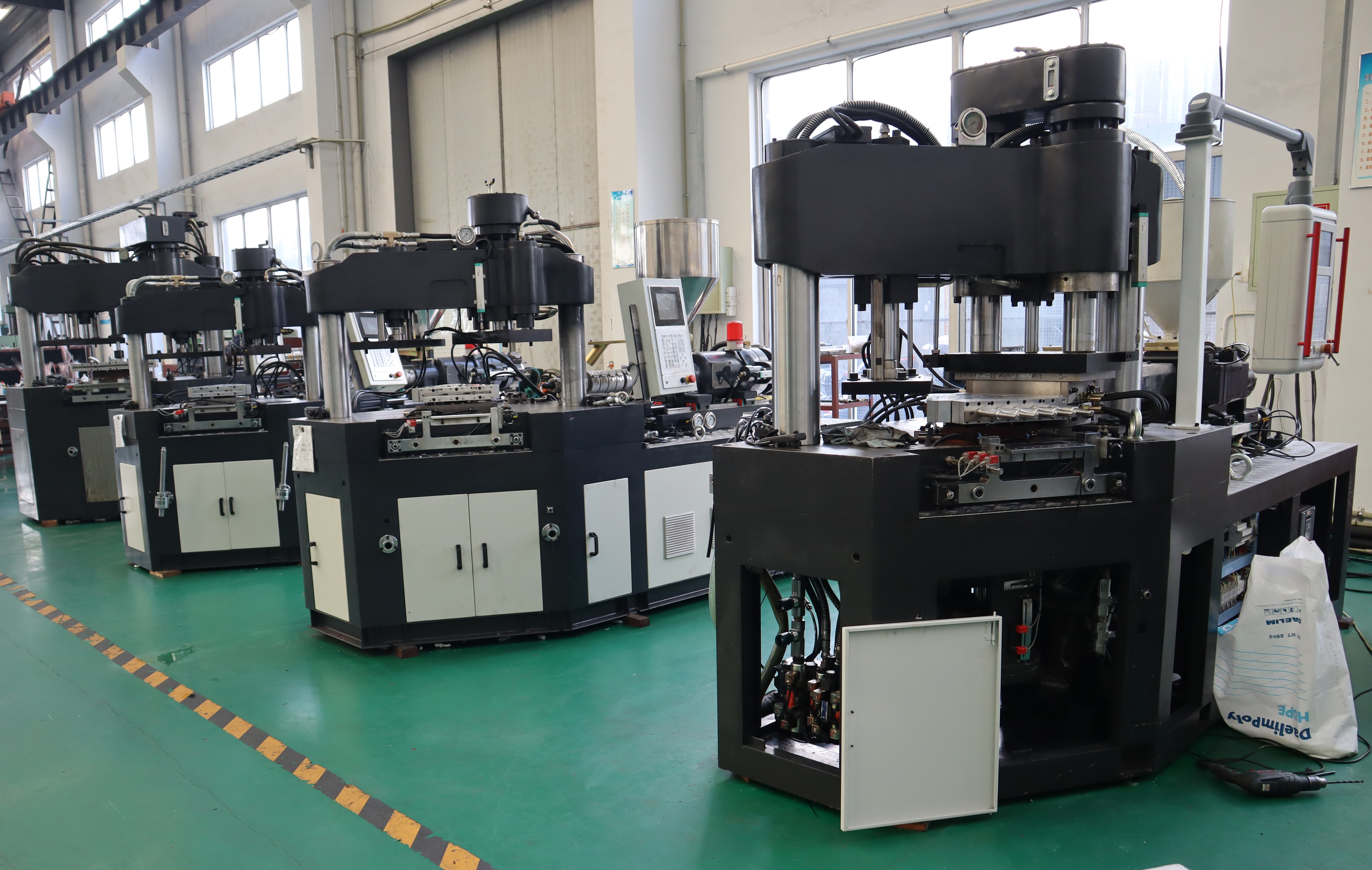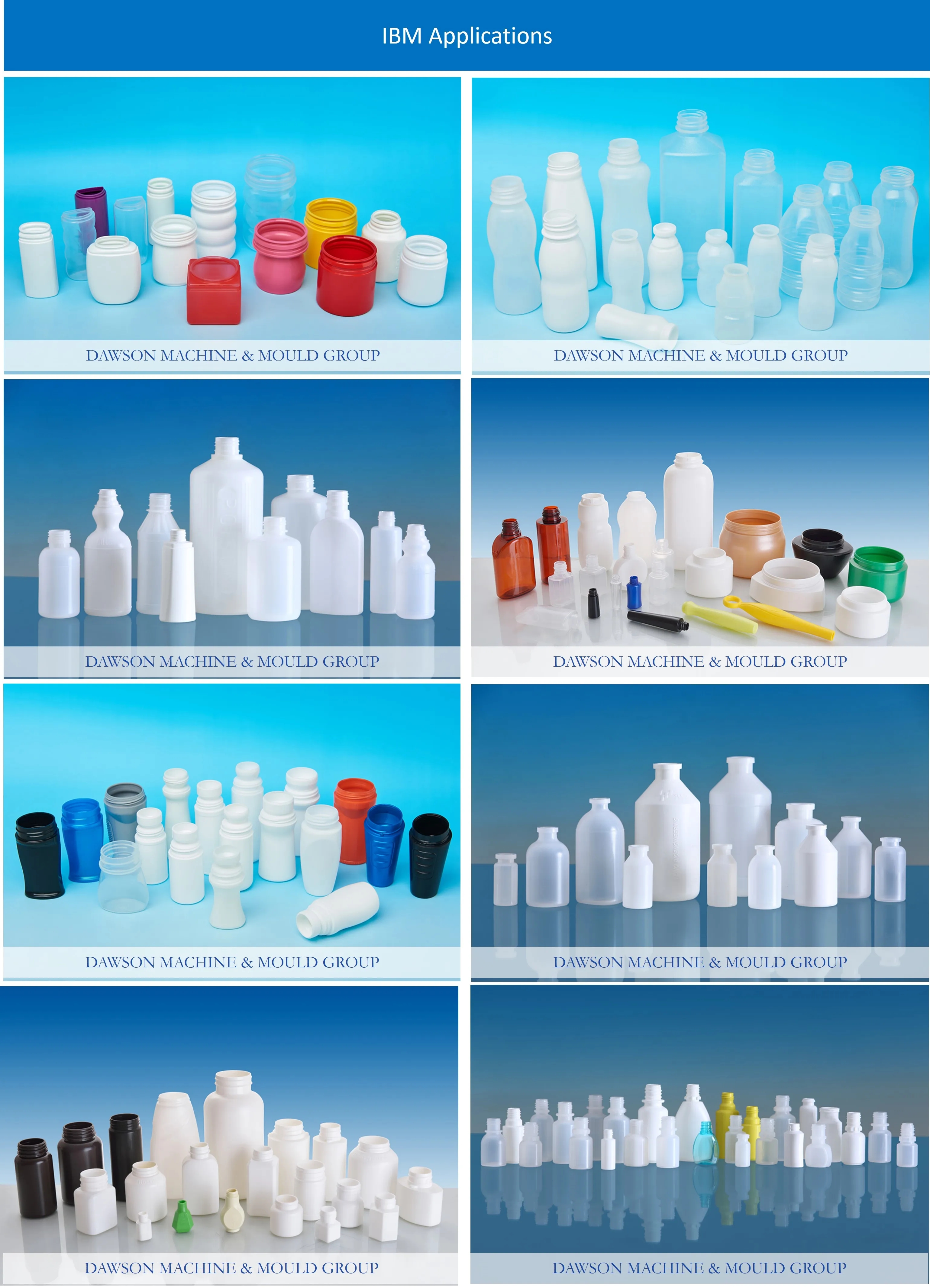- All
- Product Name
- Product Keyword
- Product Model
- Product Summary
- Product Description
- Multi Field Search
| Place of Origin: | |
|---|---|
| Condition: | |
| Plastic Type: | |
| Application: | |
| Availability: | |
| Quantity: | |
IBM35
Dawson
8477101090
High quality 500ml food salad ketchup bottles for injection molding machines
DESCRIPTION
Advantage
 | The process of creating plastic bottles, specifically through the hollow blow molding technique, draws inspiration from the age - old glass container blowing process. In this method, an extrusion or injection - molded plastic pre - form, which is in a malleable, relativistic state, is carefully placed within a specially designed blowing mold. Once in position, a precisely calibrated stream of compressed air, delivered at a certain pressure, is introduced into the mold. This air pressure forces the plastic pre - form to expand and conform to the shape of the cavity walls of the blowing mold. As the plastic adheres to the mold walls, it begins to take on the desired shape of the final bottle. After a period of cooling, during which the plastic solidifies and hardens, the mold is carefully opened and dismantled. What remains is a plastic hollow product, an exact replica of the cavity within the mold. This intricate and well - orchestrated process is the hollow blow molding process that has become the cornerstone of modern plastic bottle production, enabling the mass - production of high - quality, durable, and aesthetically pleasing bottles that we encounter in countless aspects of our lives. |
Technical Parameter
| Model | |||||
| Item | Unit | Date | |||
| Injection system | Screw Diameter | mm | 40 | 45 | 50 |
| Max. Theoretical injection capacity | G | 176 | 260 | 314 | |
| Heating capacity | KW | 7.2 | 10 | 10 | |
| No. of heating area | Qty | 3 | 3 | 3 | |
| Clamping & blowing system | Clamping force of injection | kn | 350 | 450 | 650 |
| Clamping force of blowing | kn | 40 | 78 | 89 | |
| Opening stroke of mold platen | mm | 120 | 120 | 140 | |
| Max. Platen size (L×W) | mm | 420×340 | 560×390 | 740×390 | |
| Min. Mold thickness (H) | mm | 180 | 240 | 280 | |
| Heating capacity of mould | KW | 2.8 | 4.0 | 5.0 | |
| Product dimension range | Suitable bottle range | ml | 3-800 | 3-800 | 5-800 |
| Max. bottle height | mm | ≤180 | ≤200 | ≤200 | |
| Max. Dia. of bottle | mm | ≤80 | ≤80 | ≤80 | |
| Dry cycle | s | 4 | |||
| Hydraulic driving system | Motor power | KW | 11/15 | 18.7/22 | 17 |
| hydraulic pressure | Mpa | 14 | 14 | 14 | |
| Pneumatic system | Min. Air pressure | Mpa | ≥0.8 | 1.0 | 1.0 |
| Discharge rate of compressed air | M3/mm | ≥0.7 | ≥0.8 | ≥0.8 | |
| Cooling system | Water flowage | M3/h | 3 | 3 | 4 |
| Total rated power with mold heating | KW | 21/25 | 34/38 | 45 | |
| Machine information | Dimension | M | 3.1×1.2×2.2 | 3.5×1.4×2.3 | 4×1.28×2.35 |
| machine weight | Ton | 4.0 | 6.0 | 7.5 | |
Application

High quality 500ml food salad ketchup bottles for injection molding machines
DESCRIPTION
Advantage
 | The process of creating plastic bottles, specifically through the hollow blow molding technique, draws inspiration from the age - old glass container blowing process. In this method, an extrusion or injection - molded plastic pre - form, which is in a malleable, relativistic state, is carefully placed within a specially designed blowing mold. Once in position, a precisely calibrated stream of compressed air, delivered at a certain pressure, is introduced into the mold. This air pressure forces the plastic pre - form to expand and conform to the shape of the cavity walls of the blowing mold. As the plastic adheres to the mold walls, it begins to take on the desired shape of the final bottle. After a period of cooling, during which the plastic solidifies and hardens, the mold is carefully opened and dismantled. What remains is a plastic hollow product, an exact replica of the cavity within the mold. This intricate and well - orchestrated process is the hollow blow molding process that has become the cornerstone of modern plastic bottle production, enabling the mass - production of high - quality, durable, and aesthetically pleasing bottles that we encounter in countless aspects of our lives. |
Technical Parameter
| Model | |||||
| Item | Unit | Date | |||
| Injection system | Screw Diameter | mm | 40 | 45 | 50 |
| Max. Theoretical injection capacity | G | 176 | 260 | 314 | |
| Heating capacity | KW | 7.2 | 10 | 10 | |
| No. of heating area | Qty | 3 | 3 | 3 | |
| Clamping & blowing system | Clamping force of injection | kn | 350 | 450 | 650 |
| Clamping force of blowing | kn | 40 | 78 | 89 | |
| Opening stroke of mold platen | mm | 120 | 120 | 140 | |
| Max. Platen size (L×W) | mm | 420×340 | 560×390 | 740×390 | |
| Min. Mold thickness (H) | mm | 180 | 240 | 280 | |
| Heating capacity of mould | KW | 2.8 | 4.0 | 5.0 | |
| Product dimension range | Suitable bottle range | ml | 3-800 | 3-800 | 5-800 |
| Max. bottle height | mm | ≤180 | ≤200 | ≤200 | |
| Max. Dia. of bottle | mm | ≤80 | ≤80 | ≤80 | |
| Dry cycle | s | 4 | |||
| Hydraulic driving system | Motor power | KW | 11/15 | 18.7/22 | 17 |
| hydraulic pressure | Mpa | 14 | 14 | 14 | |
| Pneumatic system | Min. Air pressure | Mpa | ≥0.8 | 1.0 | 1.0 |
| Discharge rate of compressed air | M3/mm | ≥0.7 | ≥0.8 | ≥0.8 | |
| Cooling system | Water flowage | M3/h | 3 | 3 | 4 |
| Total rated power with mold heating | KW | 21/25 | 34/38 | 45 | |
| Machine information | Dimension | M | 3.1×1.2×2.2 | 3.5×1.4×2.3 | 4×1.28×2.35 |
| machine weight | Ton | 4.0 | 6.0 | 7.5 | |
Application
